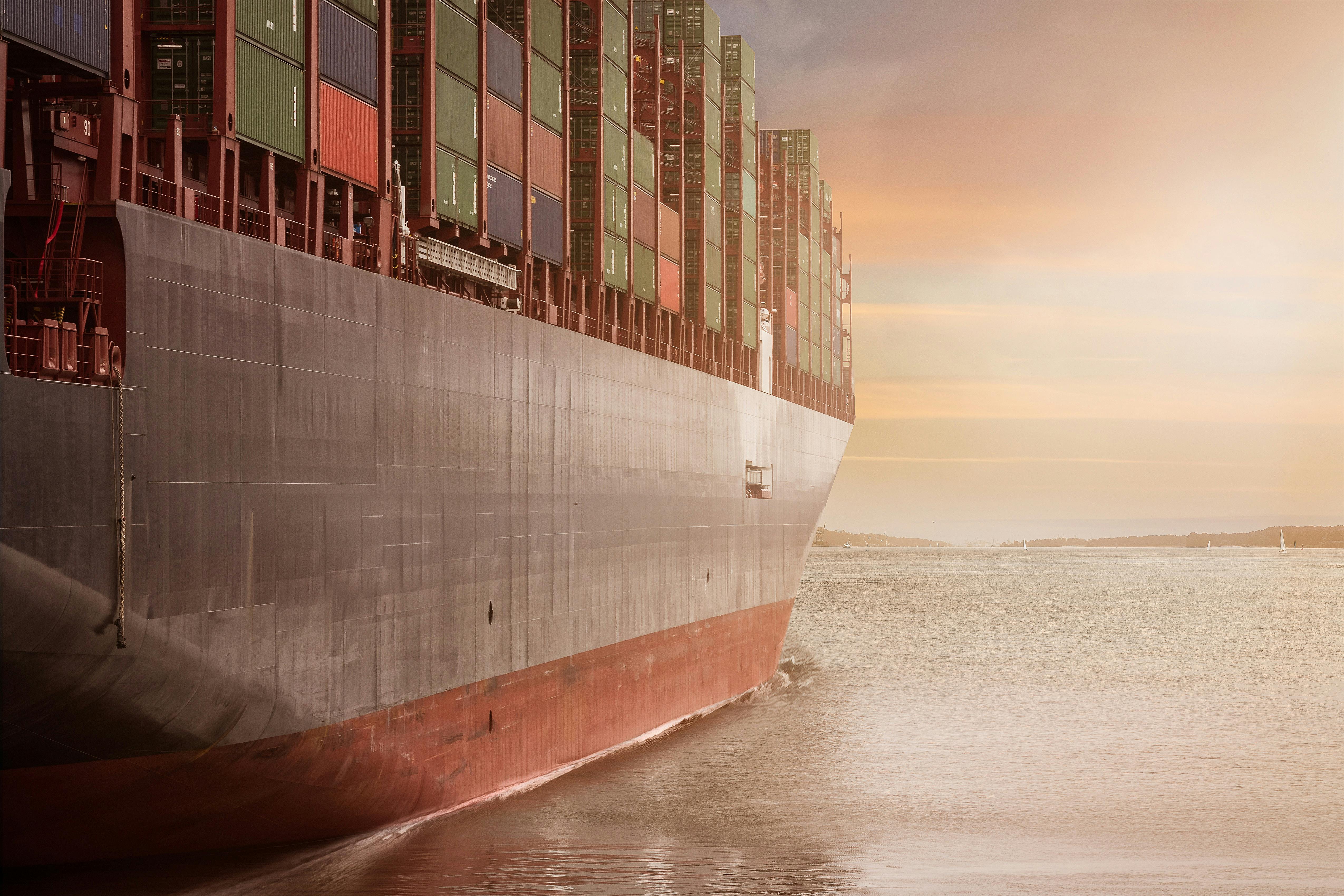Driving Abroad: What To Do After Your Car Arrives - Complete Guide
Your car has finally arrived at its overseas destination after weeks at sea or days in the air—but the journey isn't over yet. Successfully transitioning from international shipping recipient to legal driver abroad requires navigating customs clearance, vehicle registration, licensing requirements, and local compliance procedures that vary dramatically by country. After facilitating thousands of international car deliveries at West Coast Shipping, we've seen how proper post-arrival planning makes the difference between smooth road-ready registration and costly bureaucratic delays.
The euphoria of seeing your vehicle roll off the ship or emerge from a container can quickly turn to frustration if you haven't prepared for the complex administrative steps that follow. From clearing customs and paying import duties to obtaining local registration and securing proper documentation, each destination country maintains unique requirements that must be completed before you can legally drive. Understanding these procedures in advance ensures you'll be behind the wheel as quickly as possible rather than trapped in paperwork purgatory.
Immediate Post-Arrival Priorities
When your vehicle arrives at its destination port, several time-sensitive actions require immediate attention to prevent delays and additional costs.
Customs Clearance: Your First Critical Step
Customs clearance represents the gateway between international shipping and domestic possession. This process must be completed before you can take physical possession of your vehicle, and timing is crucial since port storage fees accumulate daily.
Essential Documentation for Customs:
-
Original bill of lading from the shipping company
-
Commercial invoice or bill of sale showing purchase price
-
Vehicle title or ownership certificate
-
Valid passport or identification
-
Import permit or customs declaration forms
-
EPA and DOT compliance certificates (for US imports)
-
Proof of applicable duty and tax payments
Most countries require customs clearance within 5-10 days of arrival to avoid escalating storage fees. Professional customs brokers can expedite this process, but their services add $200-500 to your total costs.
Duty and Tax Assessment
Import duties and taxes represent significant costs that must be paid before vehicle release. These fees vary dramatically by destination country and vehicle characteristics:
Common Fee Structure:
-
Import Duty: 0-25% of vehicle value depending on country and vehicle type
-
Value Added Tax (VAT): 15-25% in most European countries
-
Environmental Fees: Additional charges for emissions or engine size
-
Processing Fees: Administrative costs for customs handling
For detailed cost breakdowns by destination, our international shipping quote page provides country-specific duty calculations and fee structures.
Physical Inspection and Condition Verification
Upon customs release, conduct an immediate thorough inspection of your vehicle to document its post-shipping condition. This inspection serves multiple purposes:
Inspection Checklist:
-
Compare current condition to pre-shipping photos
-
Document any new damage for potential claims
-
Verify all personal items (if permitted) are present
-
Check fluid levels and battery condition
-
Confirm tire pressure and overall mechanical condition
-
Test all electrical systems and accessories
Any shipping-related damage must be documented immediately and reported to both the shipping company and any cargo protection providers within specified time limits, typically 48-72 hours.
Vehicle Registration Requirements by Region
Each destination maintains unique vehicle registration requirements that must be completed before legal road use. Understanding these requirements in advance prevents delays and ensures compliance.
European Union Registration Process
EU countries maintain harmonized standards but individual national requirements for vehicle registration. Most EU nations require registration within 1-6 months of establishing residency, with specific procedures varying by country.
Common EU Requirements:
-
Valid vehicle ownership documentation
-
Proof of EU compliance (conformity certificate)
-
Technical inspection certificate
-
Proof of local residence
-
Valid driving license
-
Third-party liability coverage
Countries like Germany and Denmark offer duty-free import opportunities for qualifying residents. Our guides on moving to Germany with a vehicle and moving with vehicle to Denmark detail specific qualification requirements and procedures.
United Kingdom Registration
UK vehicle registration involves both HMRC customs clearance and DVLA registration processes. The UK maintains specific requirements for imported vehicles that differ from EU procedures following Brexit.
UK-Specific Steps:
-
NOVA Declaration: Notification of Vehicle Arrivals must be completed with HMRC
-
Customs Duty Payment: Import duties and VAT must be paid before release
-
Vehicle Approval: Proof that vehicle meets UK standards
-
DVLA Registration: Formal registration with Driver and Vehicle Licensing Agency
-
MOT Testing: Safety inspection may be required before registration
-
Road Tax Payment: Annual vehicle tax must be paid before driving
The entire UK registration process typically takes 6-8 weeks and requires professional assistance for complex cases involving non-EU vehicles.
Middle East Registration
Middle Eastern countries maintain varying requirements for vehicle imports, with some offering temporary import options for expatriates. Countries like Saudi Arabia and UAE provide different procedures for residents versus temporary workers.
Our comprehensive guide to shipping supercars to the Middle East covers region-specific registration requirements and compliance procedures for high-value vehicles.
Australian and New Zealand Registration
Both Australia and New Zealand maintain strict vehicle import requirements with mandatory compliance modifications for many vehicles. Registration requires proof of Australian Design Rules (ADR) compliance or New Zealand Vehicle Standards compliance.
ANZ Registration Requirements:
-
Import approval documentation
-
Compliance modification certificates (if required)
-
Roadworthy inspection certificate
-
Proof of identity and residency
-
Customs clearance documentation
-
Applicable state/territory registration fees
Driving License Requirements
Legal driving in your destination country requires appropriate licensing, which may involve converting your existing license, obtaining an International Driving Permit, or completing local testing requirements.
International Driving Permit (IDP)
An International Driving Permit translates your domestic license into multiple languages and provides legal authority to drive in participating countries. IDPs must be obtained from your home country before travel and cannot be issued while abroad.
IDP Requirements:
-
Valid domestic driving license from issuing country
-
Minimum age of 18 years
-
Completed application with passport photos
-
Application fees (typically $20-50)
-
Processing time of 2-8 weeks depending on issuing authority
IDPs are valid for 1-3 years depending on the convention under which they're issued, but many countries limit their use to specific time periods for residents.
License Conversion Procedures
Many countries allow foreign license conversion without retesting, provided reciprocal agreements exist and conversion occurs within specified timeframes.
Common Conversion Requirements:
-
Valid foreign driving license
-
Proof of driving experience (often minimum 1-2 years)
-
Medical examination or vision test
-
Residency documentation
-
Application fees and processing costs
-
Sometimes written or practical testing
European countries typically allow conversion within 6-12 months of establishing residency, while other destinations may have shorter windows requiring immediate action.
New License Requirements
Some destinations require new residents to complete local driver testing regardless of previous experience. This typically involves both written knowledge tests and practical driving examinations.
Testing Process:
-
Study local traffic laws and road signs
-
Complete written examination in local language or English
-
Pass practical driving test demonstrating local rule knowledge
-
Provide medical clearance if required
-
Pay licensing fees and obtain temporary permits during processing
Local Compliance and Legal Requirements
Driving legally abroad involves more than registration and licensing—local compliance requirements affect everything from equipment to behavior.
Mandatory Vehicle Equipment
Many countries require specific safety equipment that may not be standard on foreign vehicles. Failure to carry required items results in fines and potential vehicle impoundment.
Common Equipment Requirements:
-
Warning triangles: Required in most European countries
-
First aid kits: Mandatory in several EU nations
-
Fire extinguishers: Required in some countries
-
Reflective vests: Must be accessible for roadside emergencies
-
Headlight deflectors: Required for right-hand drive vehicles in left-hand traffic countries
-
Emission stickers: Required for city center access in many urban areas
Ongoing Compliance Obligations
Vehicle ownership abroad involves continuing obligations beyond initial registration. Understanding these requirements prevents future legal and financial complications.
Annual Requirements:
-
Technical inspections: Periodic safety and emissions testing
-
Registration renewal: Annual or biennial renewal with updated documentation
-
Tax payments: Annual vehicle taxes based on engine size, emissions, or value
-
Maintenance records: Some countries require service documentation
-
Modification reporting: Changes to vehicle specifications must be reported
Financial Responsibilities
Vehicle ownership costs extend beyond initial import duties and registration fees. Planning for ongoing expenses ensures sustainable vehicle ownership abroad.
Ongoing Cost Categories:
-
Annual registration fees: $50-500 depending on country and vehicle
-
Periodic inspections: $50-200 for required safety and emissions testing
-
Vehicle taxes: Calculated based on engine size, emissions, or value
-
Mandatory coverage: Third-party liability minimums vary by country
-
Maintenance compliance: Some countries require professional service records
Practical Considerations for Daily Driving
Successfully transitioning to driving abroad involves adapting to local driving culture, road systems, and practical considerations beyond legal compliance.
Understanding Local Driving Culture
Driving norms vary dramatically between countries, affecting everything from following distances to intersection behavior. Observing local practices prevents accidents and reduces citation risk.
Cultural Adaptation Areas:
-
Traffic flow patterns: Lane discipline and overtaking norms
-
Intersection behavior: Right-of-way customs and signaling practices
-
Parking conventions: Street parking rules and payment systems
-
Highway etiquette: Speed differentials and lane usage
-
Emergency procedures: Accident reporting and roadside assistance protocols
Navigation and Route Planning
Local navigation systems and route planning become essential for efficient travel in unfamiliar territory. Modern GPS systems provide real-time traffic and regulation updates.
Navigation Essentials:
-
Local GPS updates: Ensure maps reflect current road conditions and restrictions
-
Traffic regulation awareness: Speed cameras, emission zones, and toll systems
-
Alternative route planning: Backup routes for construction or traffic delays
-
Emergency services contacts: Local equivalent numbers for police, medical, and breakdown assistance
Vehicle Servicing and Maintenance
Maintaining your vehicle abroad requires understanding local service networks, parts availability, and maintenance standards. Establishing service relationships early prevents future complications.
Service Planning:
-
Authorized service centers: Locate qualified mechanics familiar with your vehicle type
-
Parts availability: Confirm availability of common replacement parts
-
Warranty considerations: Understand how international relocation affects coverage
-
Service documentation: Maintain records required for inspections and resale
Common Challenges and Solutions
International vehicle transitions involve predictable challenges that can be minimized through proper preparation and professional guidance.
Documentation Translation and Certification
Foreign documentation often requires official translation and certification for acceptance by local authorities. Professional translation services ensure accurate compliance.
Translation Requirements:
-
Certified translators: Use officially recognized translation services
-
Apostille certification: Some countries require additional authentication
-
Multiple copies: Maintain original and translated versions of all documents
-
Digital backup: Store electronic copies in secure cloud storage
Timeline Management
Vehicle registration and licensing processes involve multiple sequential steps with varying processing times. Coordinating these timelines prevents gaps in legal driving authority.
Timeline Coordination:
-
Customs clearance: 1-5 days after arrival
-
Initial inspection: Immediate upon customs release
-
Registration application: Within required timeframe (varies by country)
-
License conversion: Often must begin within 30-90 days of residency
-
Final compliance: All requirements completed before temporary permits expire
Financial Planning
Import duties, registration fees, and compliance costs can exceed initial estimates without proper planning. Comprehensive budgeting prevents financial surprises.
Budget Categories:
-
Import duties and taxes: 10-50% of vehicle value depending on destination
-
Registration and licensing fees: $200-1,000 for initial setup
-
Compliance modifications: $500-5,000 if required for local standards
-
Professional services: $500-2,000 for customs brokers and assistance
-
Emergency reserves: 20% contingency for unexpected requirements
Professional Assistance and Support Services
Complex international vehicle transitions often benefit from professional guidance, particularly for high-value vehicles or complicated regulatory environments.
Customs Brokerage Services
Licensed customs brokers expedite clearance processes and ensure regulatory compliance. Their expertise prevents costly mistakes and reduces processing time.
Broker Services Include:
-
Documentation preparation: Accurate completion of all required forms
-
Duty calculation: Proper classification and fee assessment
-
Customs liaison: Direct communication with customs authorities
-
Release coordination: Efficient vehicle release and pickup scheduling
Vehicle Registration Specialists
Local registration specialists understand country-specific requirements and can navigate complex bureaucratic processes. Their services are particularly valuable for unique or high-value vehicles.
Specialist Services:
-
Requirements assessment: Complete evaluation of registration requirements
-
Documentation assembly: Preparation of all required paperwork
-
Authority liaison: Direct communication with registration authorities
-
Timeline management: Coordination of sequential approval processes
Legal and Compliance Consulting
International vehicle ownership involves complex legal considerations that vary by jurisdiction. Professional legal guidance ensures full compliance and prevents future complications.
Legal Services:
-
Regulatory compliance: Understanding of local vehicle laws and requirements
-
Tax optimization: Strategies for minimizing ongoing tax obligations
-
Ownership structuring: Optimal legal ownership arrangements for expatriates
-
Dispute resolution: Professional assistance with regulatory or service disputes
West Coast Shipping's Post-Arrival Support
Our commitment to customer success extends beyond vehicle delivery to include comprehensive post-arrival support and guidance.
Destination Country Expertise
Nearly two decades of international shipping experience has provided us with extensive knowledge of destination-specific requirements and procedures. This expertise helps customers navigate complex post-arrival processes efficiently.
Our Support Includes:
-
Country-specific guidance: Detailed requirements for major destination countries
-
Customs broker networks: Relationships with qualified professionals worldwide
-
Documentation assistance: Guidance on required paperwork and procedures
-
Timeline planning: Realistic scheduling for registration and compliance processes
Customer Success Programs
We maintain ongoing relationships with customers to ensure successful vehicle transitions and satisfaction with international shipping experiences.
Success Programs:
-
Post-arrival check-ins: Follow-up communication to address questions and concerns
-
Resource provision: Access to destination-specific guides and requirements
-
Professional referrals: Connections to qualified local service providers
-
Feedback collection: Continuous improvement based on customer experiences
Comprehensive Service Integration
Our integrated approach combines shipping expertise with destination knowledge to provide complete international vehicle relocation solutions.
Integrated Services:
-
Pre-shipping consultation: Destination requirements planning and preparation
-
Professional shipping: Secure transport with comprehensive tracking and communication
-
Arrival coordination: Customs clearance assistance and vehicle release support
-
Post-arrival guidance: Registration, licensing, and compliance support
Transitioning to driving abroad after international vehicle shipping involves complex administrative, legal, and practical considerations that vary significantly by destination country. Success requires thorough preparation, attention to detail, and often professional assistance to navigate the maze of requirements and procedures.
At West Coast Shipping, we understand that receiving your vehicle overseas is just the beginning of your international automotive journey. Our comprehensive expertise and commitment to customer success ensures you have the knowledge and support needed to transition smoothly from shipping recipient to legal driver in your new country.
Whether you're permanently relocating, temporarily assigned abroad, or importing a special vehicle for personal use, proper post-arrival planning and execution makes the difference between a smooth transition and a frustrating bureaucratic experience.
Start Your International Driving Journey
Ready to bring your vehicle abroad and navigate the post-arrival process with confidence? Our expert team provides comprehensive guidance from initial shipping consultation through successful registration and road-ready status. Use our calculator below to explore shipping options and connect with our destination specialists who can help you plan every aspect of your international vehicle transition.
You May Also Like
These Related Stories

Door-to-Door International Car Shipping: Benefits & Costs

Luxury Auto Parts: Car Part Tariffs Driving Up Restoration Costs

-093789-edited.png?width=220&height=79&name=wcs_final_logo_(1)-093789-edited.png)
